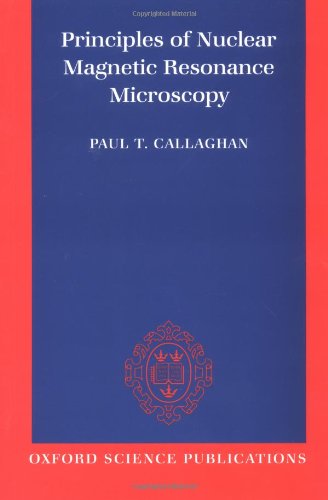Principles of Nuclear Magnetic Resonance Microscopy book
Par berger kylie le jeudi, juin 2 2016, 02:36 - Lien permanent
Principles of Nuclear Magnetic Resonance Microscopy. Paul Callaghan

Principles.of.Nuclear.Magnetic.Resonance.Microscopy.pdf
ISBN: 0198539444,9780198539445 | 512 pages | 13 Mb

Principles of Nuclear Magnetic Resonance Microscopy Paul Callaghan
Publisher: Oxford University Press, USA
According to MR principles, the lowest detection limit is 1018 spins per voxel 24. Magnetic resonance works by the interaction of electromagnetic radiation with the atomic nuclei in the presence of a magnetic field. This work, focusing on cell metabolism, led Damadian to believe that there should be a way to detect cancerous cells through chemical analysis rather than by relying on direct visualization under a microscope. Prior to the development of three-dimensional magnetic resonance imaging (MRI), the tracking of immune cell migration was limited to microscopic analyses or tissue biopsies. Understand the physical principle of MR imaging 2. Download Principles of Nuclear Magnetic Resonance Microscopy - Free chm, pdf ebooks rapidshare download, ebook torrents bittorrent download. The resulting response by the total magnetization (M) of the nuclear spins is the phenomenon that is exploited in NMR spectroscopy and magnetic resonance imaging. NMR Imaging and Its Application to Clinical MedicineThe idea of using a magnetic gradient to introduce spatial information into signals from an NMR spectrometer, which can then be converted to an actu… Hébergé par OverBlog. However, a proton and neutron will have lower energy when their spins are parallel, not anti-parallel, as this parallel spin alignment does not infringe upon the Pauli principle, but instead has to do with the quark structure of "Magnetic resonance microscopy: recent advances and applications". And how it's Smaller objects, such as viruses, or even molecules, are not visible in a microscope. In addition, the similarity between 19F and 1H ( regarding their NMR properties) is a prerequisite for a meaningful overlay between the anatomical 1H MRI with the 19F MRI of labeled cells. Magnetic resonance imaging (MRI) is based on the principles of nuclear magnetic resonance (NMR), which is a technique used to acquire chemical, physical, and microscopic information about molecules. Principles of Nuclear Magnetic Resonance Microscopy. Since light is nothing else than electromagnetic radiation, it seems a straightforward idea to use an approach similar to optical imaging in order to get spatially resolved NMR spectra. Force-detected nuclear magnetic resonance: recent advances and future challenges. We review recent efforts to detect small numbers of nuclear spins using magnetic resonance force microscopy.
Veterinary Epidemiologic Research pdf download
A History of the Spanish Language (2nd ed) pdf
Managing Software Requirements: A Use Case Approach pdf free